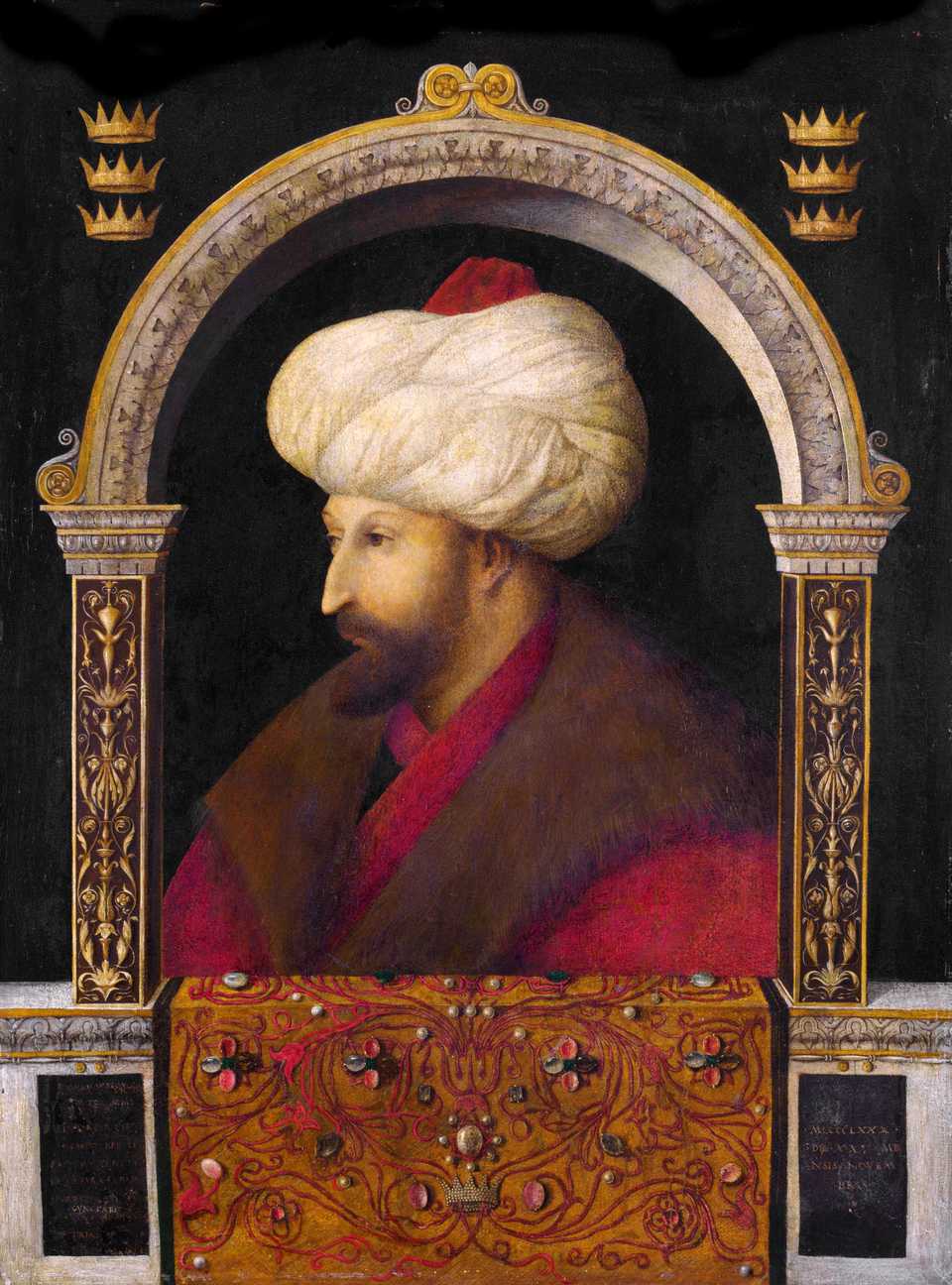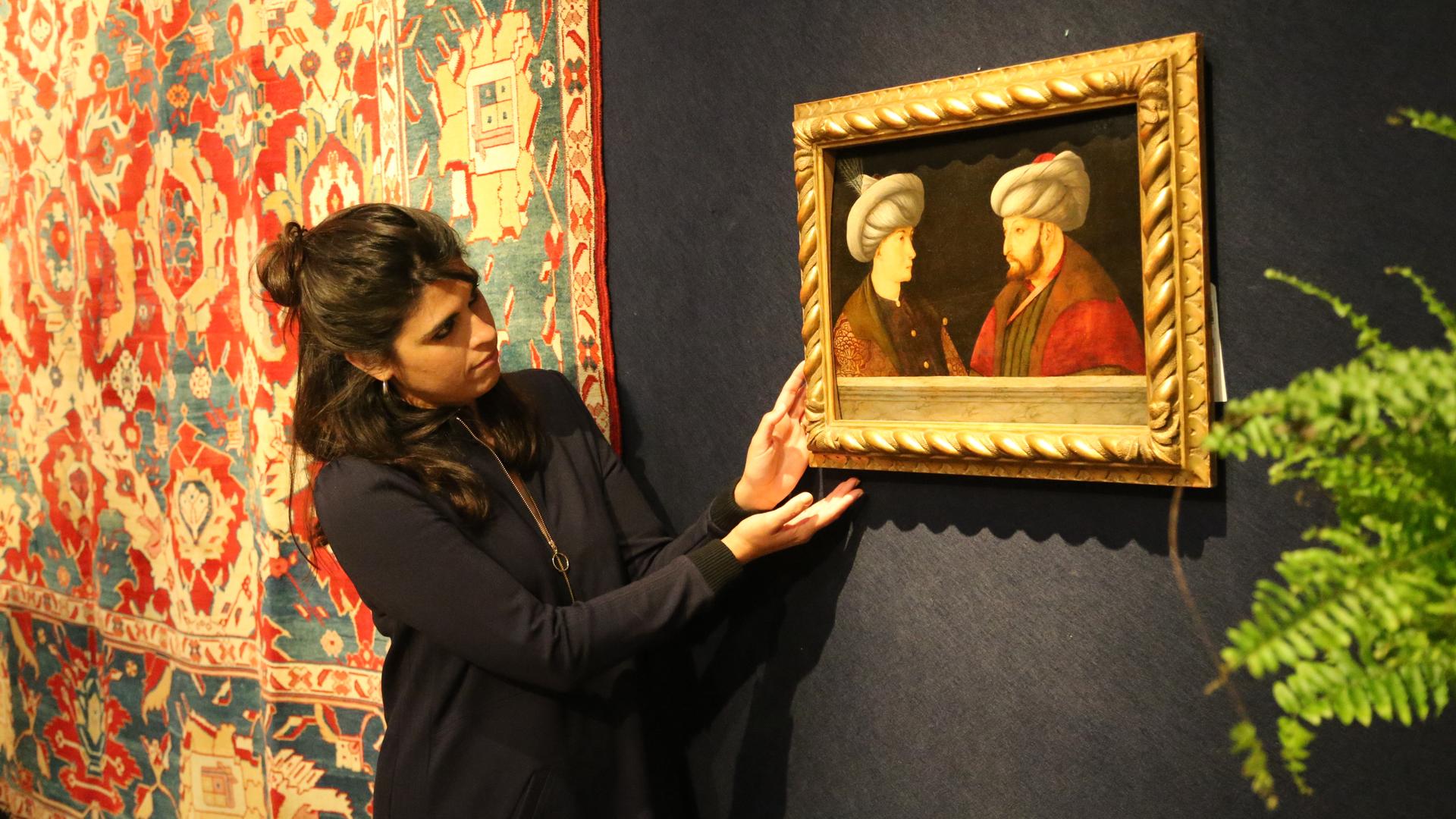A portrait of an Ottoman sultan has sold for $1,172,803.50 (935,250 GBP) at Christie’s auction house in London, UK. The portrait of Sultan Mehmed II, known as Fatih Sultan Mehmet in Turkish, was expected to fetch between $501,600 to $752,400 (400,000 to 600,000 GBP).
The mayor of Istanbul, Ekrem Imamoglu, has tweeted that the Istanbul Municipality has purchased the oil painting.
The portrait, according to Christie’s, is the product of the workshop of Gentile Bellini of Venice, circa 1429-1507. It is an oil on panel portrait and is 33.4cm in height and 45.4 cm in width. It is the last one to remain in private hands, says Christie’s.
Sultan Mehmed II (1432-1481) is known as ‘Fatih’ (‘the Conqueror’ in Turkish) as he is the ruler who conquered Istanbul from the Byzantine Empire on May 29, 1453, at the age of 21.
Christie’s Islamic & Indian Art Department Head Sara Plumbly told Anadolu Agency that the work, part of the auction “Art of the Islamic and Indian Worlds Including Oriental Rugs and Carpets”, is unsigned.
Plumbly continued to say that the second figure portrayed alongside Mehmed II is unknown.
“We don’t know who this other figure is. There have been a few suggestions –– for instance, one of his three sons. But that does not seem to fit precisely how he is depicted in terms of the age that one of the sons would have been at the time. Some others suggest he might be a European dignitary. He is sort of clean-shaven. He does not have the beard you might expect from an Ottoman man.”
According to Plumbly, it is not very common to find another figure next to the sultan in Ottoman portraiture on the same scale.
“If you have another figure, he should be either a very important person or someone from the royal family.”
Plumbly said that a significant detail about the work is that it was one of the only three portraits made during the time of Mehmed II.
According to press materials by Christie’s, the portrait offered in the auction “documents the fascinating interaction between the East and the West in the late-fifteenth century, represented through the sitter besides Sultan Mehmed II, as he could be European, possibly a Venetian merchant or a diplomat and the geo-political times, in which the double-portrait was painted.”
Ten years after the conquest of Constantinople, the Ottoman Empire and the Venetian Republic declared war in July 1463. Once the war was over in 1479, the Ottoman sultan requested, Christie’s notes, that the republic send a painter who knew “how to make portraits”, along with a sculptor and a bronze founder to visit the Ottoman court.
The honor fell to Gentile Bellini, who, coming from an artistic family, had already proven himself to be a master painter with his work at Palazzo Ducale.
Bellini left the Venetian Republic to travel to the Ottoman Empire on September 3, 1479. There isn’t much documentation as to his time in Istanbul outside of anecdotes.
According to Christie’s, “[Mehmed the Conqueror] appears to have kept the painter and his two assistants who accompanied him busy with commissions.”

AA reports that the other famous painting of Mehmed the Conqueror was produced by Bellini and has been in the collection of the National Gallery in London. The portrait, Christie’s says, “employed a more fashionable style, depicting the sitter [Mehmed the Conqueror] in three-quarter-profile.”
AA says that while Mehmed II is known best for the conquest of Constantinople, which became the seat of the Ottoman Empire, in subsequent years the sultan also “ensured ensured Ottoman control over Serbia, Morea and Trebizond (modern Trabzon) in the northern region of modern Turkey as well as Bosnia, Albania and some Anatolian (central Turkish) territories.”
Mehmed the Conqueror conducted over two dozen military campaigns during his reign and added large swathes of territories to the Ottoman Empire, increasing control to over 2.2 million square kilometres.










Discussion about this post